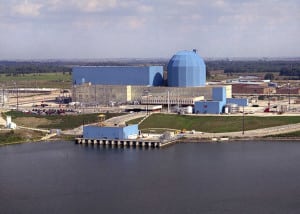Ancient Chinese fortune tellers used heated metal pokers to create cracks in bones or empty turtle shells. By reading the patterns in the cracks, they attempted to calm the unease that comes with the innate uncertainty of the world—especially the ancient world. They predicted the future and doled out advice that affected the fate and fortunes of states and their people.
Thousands of years have passed since the earliest fortunes were told, but despite scientific and technological advances, the uncertainty that underpinned ancient fortune telling is, stubbornly, still with us. In 2020, sophisticated modern analytics have raised the bar on predictive precision, but they have not removed (or even reduced) risk and uncertainty from our decision-making. Just like with cracks, people don’t trust the algorithms and technical solutions to make decisions on their own. There needs to be room for the human who reads the cracks.
For many utilities today, asset performance management (APM) strategies and the algorithms that inform them are ideal for specific tasks, but they are not yet sufficiently comprehensive to consider all aspects of risk. Consequently, these utilities are not ready to trust algorithms to make final decisions on things like maintenance and optimizing the use of their critical infrastructure. That lack of trust in technology can be debilitating for utilities who already have big hurdles to clear on their way to digital transformation.
The way to build trust in APM algorithms and digital transformation is to put human process, context, and collaboration at the core.
Process
There is more data today than there was yesterday. The entire digital universe is expected to reach 44 zettabytes this year. Now, take into consideration the size of many utility organizations. For example, a Midwest electric utility includes one of the nation’s largest investor-owned electric systems with more than 24,000 miles of transmission lines and a diverse generation fleet with a capacity of nearly 17,000 MW. That’s an overwhelming amount of data to manage, especially when the silos are finally broken.
In the age of the industrial internet, when machines communicate through alerts and messages, preventing information overload and an organizational attention deficit becomes crucial. Making data accessible to as many people as possible is the key to a successful APM digital transformation. That can include logical presentation, alert prioritization, and rolling up (summarizing) complex data.
It is equally important to incorporate roles, ownership, collaboration, and decision-making processes into APM strategies. Everyone should have a lane. That lane should come with deadlines and decision-making tasks supported by easily accessible data. These processes should also be monitored using appropriate program indicators to ensure effectiveness and focus on each level. Accountability is critical.
Context
As with all analytical processes, APM requires the data entering to be timely, accurate, relevant, and appropriately formatted to provide meaningful results. In the case of FirstEnergy, engineers, information technology (IT) professionals, and field workers collaborated to define the data requirements as a first step.
More than managing and deriving insight from data, however, algorithms must also be able to be adjusted. Technology is not at the point where it is omniscient and aware of all situations and risks at once. There are still some things only people with experience will know.
The functionality for people to adjust data being fed into the algorithm is key to the successful initial adoption of an automated predictive analytics framework. Tweaking allows users to add context and to complete the picture for enterprise-level decisions. For example, organizations can account for a risk not automatically identified, reduce risk where algorithms did not incorporate mitigating factors, define an alternative strategy to address a degraded condition, and other scenarios. The ability to adjust the data also builds trust. In fact, researchers found that people are willing to use algorithms if they can manipulate the output.
With that said, this shouldn’t be a free for all with no checks on power. Human interaction with the data process should be structured to provide opportunity for peer review and supervision. In the case of FirstEnergy, the team kept data streams in check by establishing layered checkpoints to ensure that only quality data is passed on. An additional failsafe was built into the APM solution to validate enough data to generate relevant recommendations.
Within a structure, user activity will help algorithms improve and become more comprehensive and independent in their analysis, recommendations, and automated actions.
Collaboration
The key to realizing the value of data, algorithms, and digital transformation is the connectivity it creates to work and operations management systems and the silos broken down in that process. This isn’t just mechanical. It allows more groups to contribute to the full picture and simultaneously fosters the buy-in needed to successfully complete actions. This inclusivity builds trust not only in the algorithm, but throughout an organization. And this process produces better decisions, and the resulting alignment and buy-in drives more effective execution. The collaborative process encourages risk-based decision-making as individuals are supported by peer reviews and other safeguards, and it discourages decision procrastination.
As it would be for any company with the size and history of FirstEnergy, the journey to a condition-based maintenance strategy has had challenges along the way. By placing its people at the center of the APM strategy from the very beginning, FirstEnergy realized rewards and the future potential gain of operational improvements far exceeded the pain.
Over the next decade, utilities like FirstEnergy will continue to incorporate new communications and analytics technologies into their daily work. At some point, there may be a tipping point when automated algorithms that cover key equipment and processes are intelligent enough to take actions independently. But, it hasn’t happened yet. When or if it does, the best algorithms will still—and maybe always will—be centered around humans adding their context and collaboration to the reading of cracked stones to help make decisions.
—Bryan Friehauf is executive vice president and general manager of Enterprise Software Solutions with ABB.










